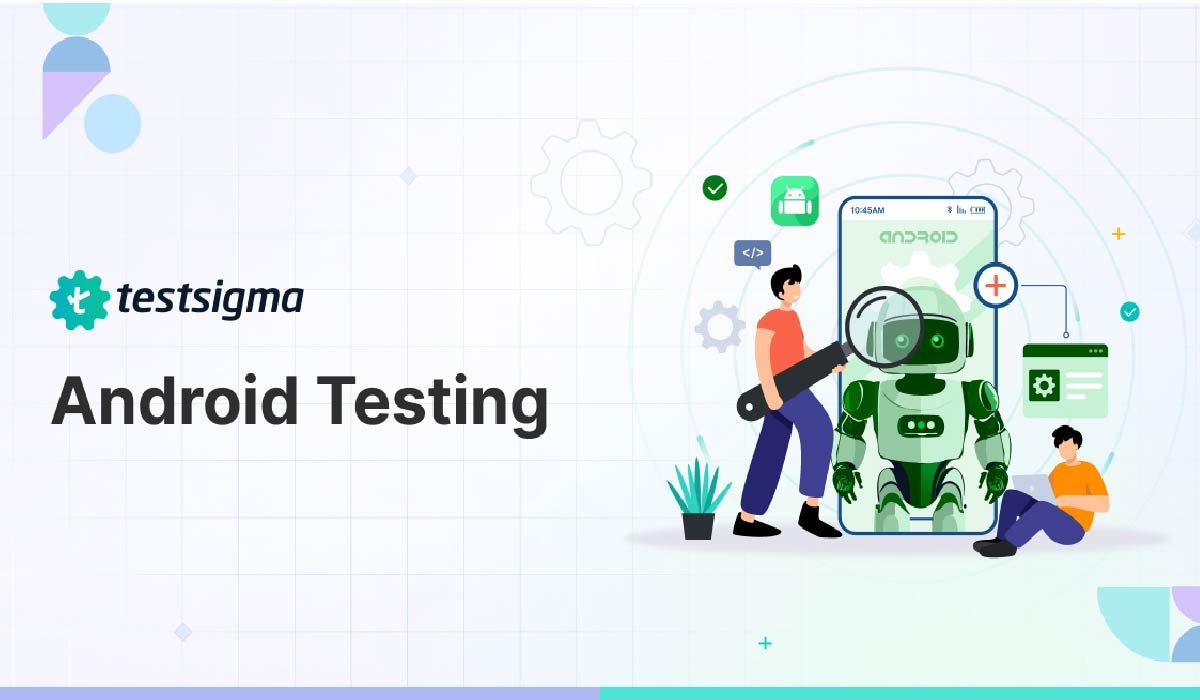Technology
A Comprehensive Guide to Android Testing Techniques, Tools, and Best Practices

As the mobile app market continues to grow exponentially, ensuring the quality, security, and performance of Android applications is paramount. Android testing plays a crucial role in the development lifecycle by detecting bugs, ensuring app stability, and enhancing user experience. With an array of Android testing tools available, developers and QA teams can efficiently automate testing, reduce errors, and accelerate the release process.
This article explores the significance of Android Testing and delves into various Android Testing Tools that can streamline the testing process.
The Fundamentals of Android Testing
What is Android Testing?
Android testing refers to the systematic evaluation of an application’s features, functionality, and performance across different devices and environments. This ensures that the app meets user expectations and maintains compatibility with the diverse Android ecosystem.
Why is Android Testing Essential?
- Improves User Satisfaction :– A bug-free and seamless experience results in better user retention.
- Enhances Security :– Detects vulnerabilities and ensures data protection.
- Optimizes Performance :– Ensures the app runs efficiently across various devices.
- Reduces Costs :– Identifying and fixing bugs early in the development cycle prevents expensive post-release issues.
- Ensures Compatibility :– Confirms that the app functions correctly on different screen sizes and Android versions.
Key Types of Android Testing
Different types of tests are conducted to validate the stability and performance of an Android application:
- Unit Testing
Unit tests evaluate individual components of the app in isolation to confirm they function as expected. This method is commonly executed using JUnit and Mockito.
- Integration Testing
Integration testing verifies that different modules within the app work seamlessly together, ensuring smooth data flow and module interaction.
- UI Testing
UI testing assesses the app’s user interface to ensure it aligns with design and usability standards. Popular tools for UI testing include Espresso and UI Automator.
- Performance Testing
Performance testing examines the responsiveness and stability of the app under different workloads, helping optimize resource consumption and speed.
- Security Testing
Security testing identifies potential threats such as data leaks and unauthorized access, ensuring user data is well protected.
- Functional Testing
Functional testing verifies that all features operate according to the specified requirements, covering areas such as user inputs, navigation, and data processing.
- Regression Testing
Regression testing is conducted after modifications to ensure that new updates or bug fixes do not negatively impact existing functionalities.
Top Android Testing Tools
Several Android Testing Tools are available to facilitate efficient app validation. Here are some of the most effective options:
- Testsigma
Testsigma is a cloud-based automated testing tool designed for mobile, web, and API testing.
Key Features:
- No-code test case creation
- AI-powered test automation
- Integration with CI/CD pipelines
- Supports cross-browser and cross-platform testing
- Espresso
Espresso, developed by Google, is a widely-used UI testing framework tailored for Android applications.
Key Features:
- Simple and concise test script writing
- Fast and reliable UI interaction testing
- Tight integration with Android Studio
- UI Automator
UI Automator allows automated testing of user interactions across different apps and system UI components.
Key Features:
- Supports testing across multiple applications
- Allows interaction with system apps
- Works with Android API level 18 and above
- Appium
Appium is an open-source, cross-platform mobile testing framework that supports both Android and iOS.
Key Features:
- Works with multiple programming languages (Java, Python, Ruby, etc.)
- Does not require app modifications
- Enables cross-device testing
- Robot Framework
Robot Framework is an automation tool that supports keyword-driven testing, making it a preferred choice for acceptance testing.
Key Features:
- Extensible with third-party libraries
- Easy-to-read test cases
- Supports both mobile and web applications
- Selendroid
Selendroid is used for automating UI tests of hybrid and native Android applications.
Key Features:
- Works on real devices and emulators
- Supports parallel execution
- Allows hardware device hot-plugging
- MonkeyRunner
MonkeyRunner enables automated functional and regression testing of Android applications.
Key Features:
- Compatible with multiple scripting languages
- Can run tests on multiple devices simultaneously
- Facilitates automated screenshot capture for debugging
Best Practices for Effective Android Testing
To enhance the efficiency and effectiveness of Android testing, consider implementing the following best practices:
- Test Early and Continuously :– Identify and resolve issues in the early stages of development.
- Automate Repetitive Tests :– Leverage automation tools to streamline testing workflows.
- Ensure Compatibility Testing :– Test across various Android devices, screen sizes, and OS versions.
- Use a Combination of Real Devices and Emulators :– While emulators provide quick feedback, real-device testing ensures accuracy.
- Integrate Testing into the CI/CD Pipeline :– Automating tests in the deployment cycle enhances quality and speeds up releases.
- Analyze and Monitor Test Reports :– Regularly review test results to identify trends and prevent recurring issues.
Conclusion
Android testing is a critical component of the app development lifecycle, ensuring that applications deliver seamless performance, security, and usability. Utilizing the right Android Testing Tools enhances test coverage and efficiency, enabling businesses to deploy high-quality applications.
By implementing a structured testing strategy and leveraging automation, developers can accelerate the development process while maintaining superior app quality. As the Android ecosystem evolves, staying updated with the latest testing methodologies and tools is essential for sustained success in the mobile app industry.
-

 Celebrity11 months ago
Celebrity11 months agoWho Is Mallory Plotnik?: The Untold Story of Phil Wickham’s Wife
-

 Celebrity10 months ago
Celebrity10 months agoWho Is Allison Butler?: The Life and Influence of Kirk Herbstreit Wife
-

 Celebrity10 months ago
Celebrity10 months agoMeet Christina Erika Carandini Lee?: All You Need To Know Christopher Lee’s Daughter
-

 Celebrity9 months ago
Celebrity9 months agoWho Is Rebecca Sneed?: All You Need To Know About Lyle Menendez’s Wife
















